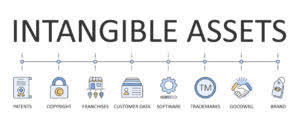
If the change in working capital is negative, it means that the change in the current operating liabilities has increased more than the current operating assets. Another way to measure working capital is to look at the working capital ratio, which is current assets divided by current liabilities. Generally, a working capital ratio of less than 1.0 is an indicator of liquidity problems, while a ratio higher than 2.0 indicates good liquidity. If a company’s change in NWC has increased year-over-year (YoY), this implies that either its operating assets have grown and/or its operating liabilities have declined from the preceding period.

How to Optimize Working Capital Management

A high net working capital demonstrates that a company efficiently utilizes its resources. This efficiency helps a business maximize its profitability, as it is well-prepared to handle unexpected expenses or invest in income-generating opportunities without relying heavily on external financing. If the change in working capital is positive, then you have more assets than liabilities. Negative NWC suggests potential liquidity issues, requiring more external financing. Since the growth in operating liabilities is outpacing the growth in operating assets, we’d reasonably expect the change in NWC to be positive.
Free Financial Modeling Lessons
- If it experiences a negative change, on the other hand, it can indicate that your company is struggling to meet its short-term obligations.
- A positive change in net working capital indicates that the company is in good financial shape and can invest in growth opportunities.
- The working capital cycle formula is days inventory outstanding (DIO) plus days sales outstanding (DSO), subtracted by days payable outstanding (DPO).
- In conclusion, determining the change in NWC is a crucial step in evaluating a company’s liquidity.
- It also shows the net increase or decrease in the working capital during the accounting period.
Net working capital can also give an indication of how quickly a company can contra asset account grow. If a business has significant capital reserves it may be able to scale its operations quite quickly, by investing in better equipment, for example. While A/R and inventory are frequently considered to be highly liquid assets to creditors, uncollectible A/R will NOT be converted into cash. In addition, the liquidated value of inventory is specific to the situation, i.e. the collateral value can vary substantially. From Year 0 to Year 2, the company’s NWC reduced from $10 million to $6 million, reflecting less liquidity (and more credit risk). For example, if a company’s NWC for 2022 is $100,000 and its NWC for 2021 is $80,000, the change in NWC is $20,000.
Cash
First, add up all the current assets line items from the balance sheet, including cash and cash equivalents, marketable investments, and accounts receivable. The net working capital (NWC) formula subtracts operating current assets by operating current liabilities. The most common examples of operating current assets include accounts receivable (A/R), inventory, and prepaid expenses. Investors and creditors use the change in NWC to assess the liquidity risk of a company. A company with a positive change in NWC is considered to have lower liquidity risk and is more likely to meet its short-term obligations.

What changes in working capital impact cash flow?
Estimated APR includes all applicable fees as required under the Truth in Lending Act. The actual loan terms you receive, including APR, will depend on the provider you select, their underwriting criteria, and your personal financial factors. The loan terms and rates presented are from the listed providers and not by SoFi Lending Corp. Inventory decisions are a crucial factor that can lead to a change in working capital.
- By analyzing a company’s net working capital over time, investors can gain insight into the company’s liquidity and potential risks.
- In contrast, a negative change in NWC may indicate that a company is collecting receivables faster than it is paying its suppliers, which may indicate operational inefficiency.
- The Net Working Capital Ratio is like a measuring tape for a business’s short-term money compared to everything it owns.
- Income tax is payable on the income of the previous year during the assessment year.

In 3-statement models and other financial models, you often project the Change in Working Capital based on a percentage of Revenue or the Change in Revenue. In this tutorial, you’ll learn about Working Capital and the Change in Working Capital in valuations and financial models – what they mean, how to project these items, and how to check your work. A financial professional will offer guidance based on the information provided and offer a no-obligation call to better understand your situation. Someone on our team will connect you with a financial professional in our Partnership Accounting network holding the correct designation and expertise. Our writing and editorial staff are a team of experts holding advanced financial designations and have written for most major financial media publications. Our work has been directly cited by organizations including Entrepreneur, Business Insider, Investopedia, Forbes, CNBC, and many others.
- This is a good sign for the company because it is trying to keep its money accessible and ready for use.
- A tighter, stricter policy reduces accounts receivable and, in turn, frees up cash.
- A better definition is Current Operational Assets minus Current Operational Liabilities, which means you exclude items like Cash, Debt, and Financial Investments.
- Similar to NWC, the NWC ratio can be used to determine whether you have enough current assets to cover your current liabilities.
- Cash comes in sooner (and total accounts receivable shrinks) when there is a short window within which customers can hold off on paying.
What is the approximate value of your cash savings and other investments?
This allows you to calculate your net working capital, which is an indication of the solvency of a business. The net working capital ratio measures the percentage of a change in net working capital company’s current assets to its short-term liabilities. Overall, interpreting the change in net working capital requires a careful analysis of the company’s financial statements and business operations.